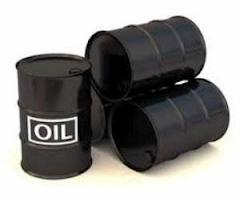Special topics
 Tullow Oil’s two new finds have moved Kenya closer to oil producer status but reaching that milestone requires developing fields in a remote region, constructing an export route and building local skills in a nation new to the business.
Tullow Oil’s two new finds have moved Kenya closer to oil producer status but reaching that milestone requires developing fields in a remote region, constructing an export route and building local skills in a nation new to the business.
Britain’s Tullow has doubled its estimate of discoveries to 600 million barrels in the Lokichar basin, an and corner of the east African nation, which wants to put itself at the centre of a regional oil boom in the making.
There is probably much more oil there. Consultancy Wood Mackenzie says two onshore basins in Kenya and Uganda could have more than 4 billion barrels in addition to Kenya’s existing reserves and the 1.6 billion already found in Uganda.
Even before Kenya’s latest finds, Tullow said the two nations could produce 500,000 barrels per day, which would boost Sub Saharan output by 8 percent from current levels of around 6.2 million bpd.
But cautionary tales abound that will encourage Tullow, an experienced African explorer, to tread carefully in drawing up its Kenyan plan, which it aims to have approved in 2015/2016.
The firm and its Kenyan partner Africa Oil halted work for two weeks last year when local protesters demanding more benefits ransacked a drilling site, exposing popular impatience for the spoils of the new industry.
In land-locked Uganda, where Tullow also has acreage, wrangling over a refinery project has been blamed for delaying commercial production of oil found back in 2006, highlighting the political challenges that can stymie projects.
“Kenya is very exciting in terms of exploration and it is potentially not as complex as Uganda as they just need to build a pipeline to the coast,” said Catriona O’Rourke, senior analyst for Sub Saharan Africa at consultancy Wood Mackenzie.
First commercial flows through a planned pipeline could start in 2019, she said. “I think it will happen, as long as politics doesn’t start slowing things down.”
Tullow has said production could start as early as 2016, but would have to be trucked out by road and rail at that stage.
Yet, there are other potential constraints beyond political tussles that may put a brake on progress. Kenya, like other east African nations seeking to develop new reserves, has to learn a new business and for now has limited capacity to assess and approve the huge-scale projects that are needed to extract oil.
New skills
The 1,300-1,400 km (800-870 mile) pipeline project to link Kenya and Uganda’s oilfields with a new Kenyan port could cost $4 billion – equivalent to about a fifth of. projected state spending in the 2013/2014 budget.
Building those new skills will take time and may lead to policy missteps, said one oil executive in Nairobi.”There are growing pains,” he said.
But he said an oil pipeline, unlike building a new road or railway, would generate immediate and visible revenue, which could focus the minds of bureaucrats to speed up implementation.
“The amount of oil they have found or are finding is too big to let it sit in the ground,” the executive added.
Some politicians are already becoming restless with a government that this month said it was delaying till June the first draft of revised laws governing the petroleum sector, which aim to draw in new investors.
“The ministry is working on the draft law, but they seem to be going very slowly,” said Jamleck Kamau, chairman of the parliament’s energy committee, speaking of regulations that were last updated in 1986.
He said the law needed careful work to share the benefits of oil production and avoid the kind of protests that drove Tullow to halt operation temporarily last year in its fields that lie in the desperately poor Turkana area.
Tullow said it had learned lessons after it “messed up” relations in the area with locals from Turkana, although analysts also blamed local politicians for whipping up the crowds. The firm returned to work after dialogue with the government and local community.
“Turkana is an underdeveloped area with a long history of government neglect and discrimination, and a population that will want a clear benefit from the resource in their midst,” Angelo Izama, a researcher for the Open Society Foundation who has been tracking oil development in the region.
That poor infrastructure adds to the challenge for Tullow and its partners. Before production can start, developers must transport heavy equipment into the rocky and arid region where the few hardened roads are often in poor shape.
It may also limit how much oil could be trucked out in the early stages of production.
“Western oil companies are under no illusion,” said the oil executive. “We are under no illusion of what needs to be done.”
Source: B&FT
Get the latest news and updates on Ghana’s oil and gas value chain by following us Reporting Oil and Gas on twitter @oilgasghana and like our facebook page and get at us on Google+. Subscribe to our group to get update